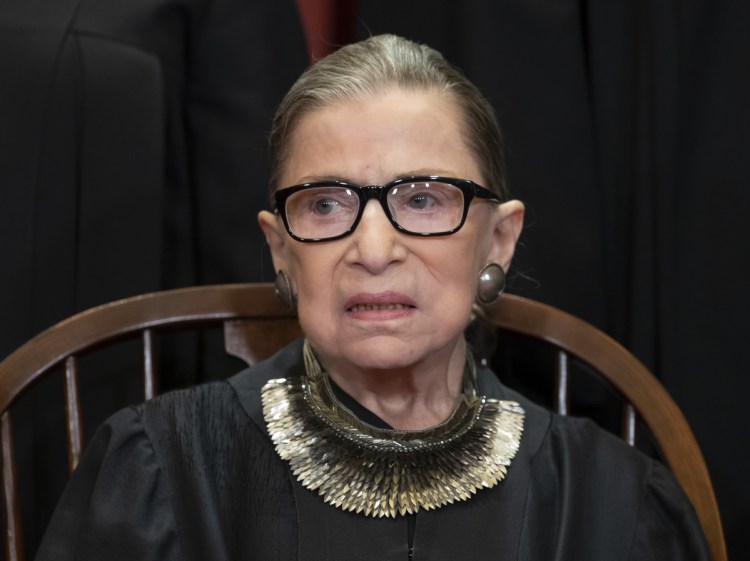WASHINGTON — Justice Ruth Bader Ginsburg had surgery Friday morning for two malignant nodules in her left lung, the 85-year-old justice’s third bout with cancer.
The pulmonary lobectomy was done at Memorial Sloan Kettering Cancer Center in New York, court spokeswoman Kathleen Arberg said in a statement. She said Ginsburg was “resting comfortably” and will remain in the hospital for several days.
The two nodules in the lower lobe of her left lung were discovered during tests at George Washington University Hospital after Ginsburg fell and broke three ribs on Nov. 7, the court said.
“Post-surgery, there was no evidence of any remaining disease,” the statement read. “Scans performed before surgery indicated no evidence of disease elsewhere in the body. Currently, no further treatment is planned.”
In a pulmonary lobectomy, a lobe of the lung is completely removed. The right lung has three lobes, the left has two.
Ginsburg was treated for colorectal cancer in 1999, and pancreatic cancer was discovered at a very early stage 10 years later. She scheduled treatment for both during the court’s off days, and has not missed a day of oral argument.
It is unclear whether she will be on the bench when the court next hears a case, on Jan. 7.
John Kucharczuk, chief of thoracic surgery in the Abramson Cancer Center at the University of Pennsylvania, said the kind of surgery Ginsburg underwent is done only when the doctors are convinced the cancer has not spread to other organs – in that case, the treatment would be a systemic therapy like chemotherapy.
“It’s relatively early stage, and you know that because they proceeded with the lobectomy,” he said. To qualify for that procedure, doctors first make sure through scans that the disease is localized and that the patient “has enough pulmonary reserve to tolerate the operation and have good quality of life afterwards,” he said.
However, he said, the doctors cannot be 100 percent sure that there was no lymph node involvement until after the pathology report is completed in a few days.
If there is cancer in the lymph nodes, then chemo would likely be prescribed, he said. Stephen Liu, a lung cancer expert at the Georgetown Lombardi Comprehensive Cancer Center, said Ginsburg may have been lucky.
Lung cancer experts said that, without lymph node involvement, Ginsburg’s odds of being cancer-free five years from now are higher than 80 percent. That falls to about 50 percent if there is node involvement.
Most lung-cancer patients are diagnosed much later, at Stage 4, which is much harder to treat, he added. “When the tumor is smallest and most likely to be cured, it is least likely to be found,” Liu said, adding that it was fortunate, in that case, “that she had had the rib fracture” and the cancer was discovered early.
Liu called Ginsburg’s surgeon – Sloan Kettering’s Valerie Rusch – one of the best in the world.
Besides her previous cancer treatments, Ginsburg has broken ribs twice, and she has undergone a heart procedure.
But she is also known as resilient and works out twice a week with a trainer. Despite the fall in her chambers last month, Ginsburg had returned to her normal schedule. She attended an event at the White House honoring the late justice Antonin Scalia, and was at the Washington opening of a movie based on her life before she became a justice. The film, “On the Basis of Sex,” opens more widely Christmas Day.
She was interviewed about the film before audiences as recently as last weekend, when she apparently was undergoing tests for the newfound malignancy.
Ginsburg is the oldest member of the court, and the most senior of the court’s four liberals. Her health is a constant concern to her supporters. She has said she intends to remain on the court as long as she feels up to the job.
She has hired law clerks through the 2020 term. But should Ginsburg’s health prevent her from continuing to serve, President Trump could see a third opportunity to fill a seat on the Supreme Court.
Send questions/comments to the editors.


